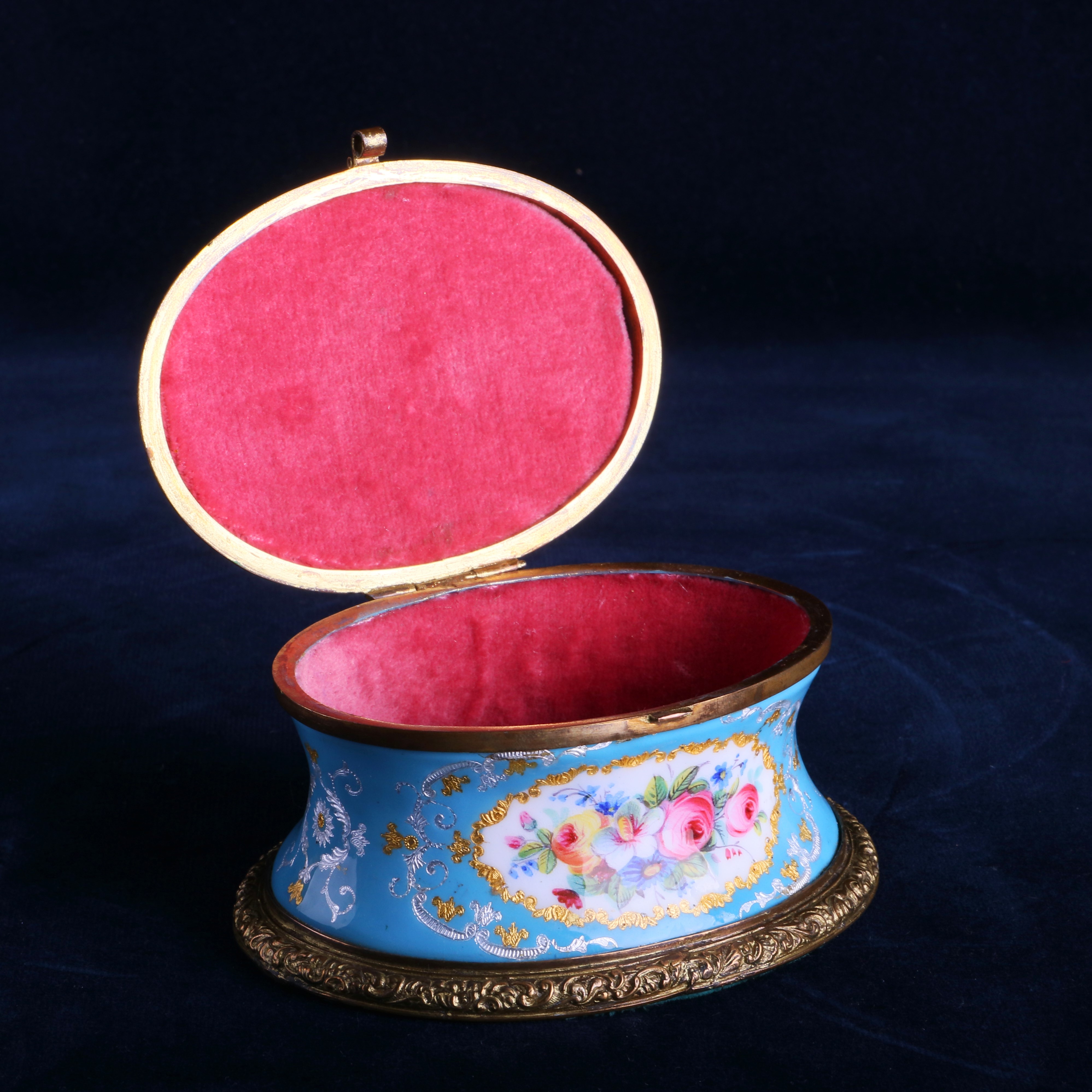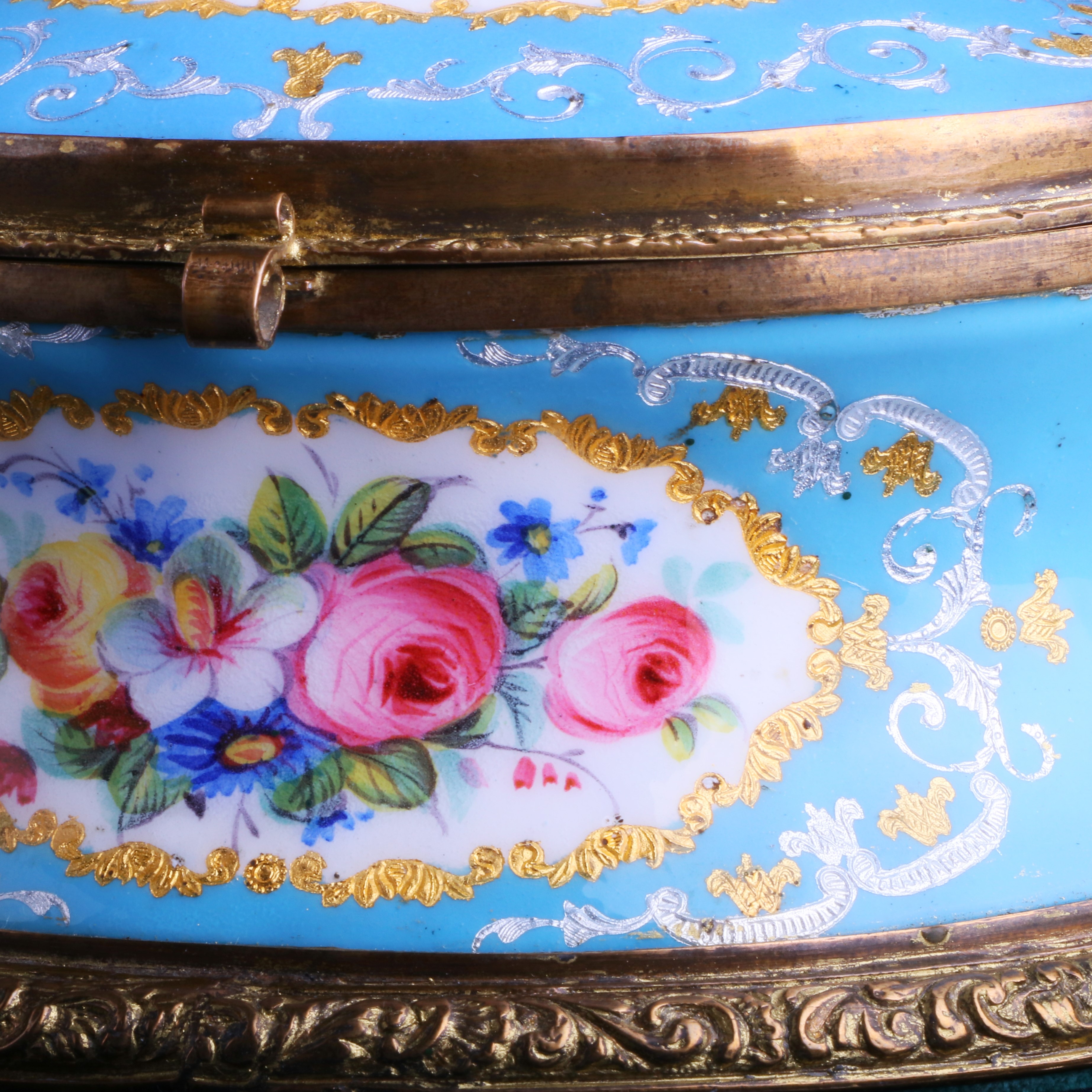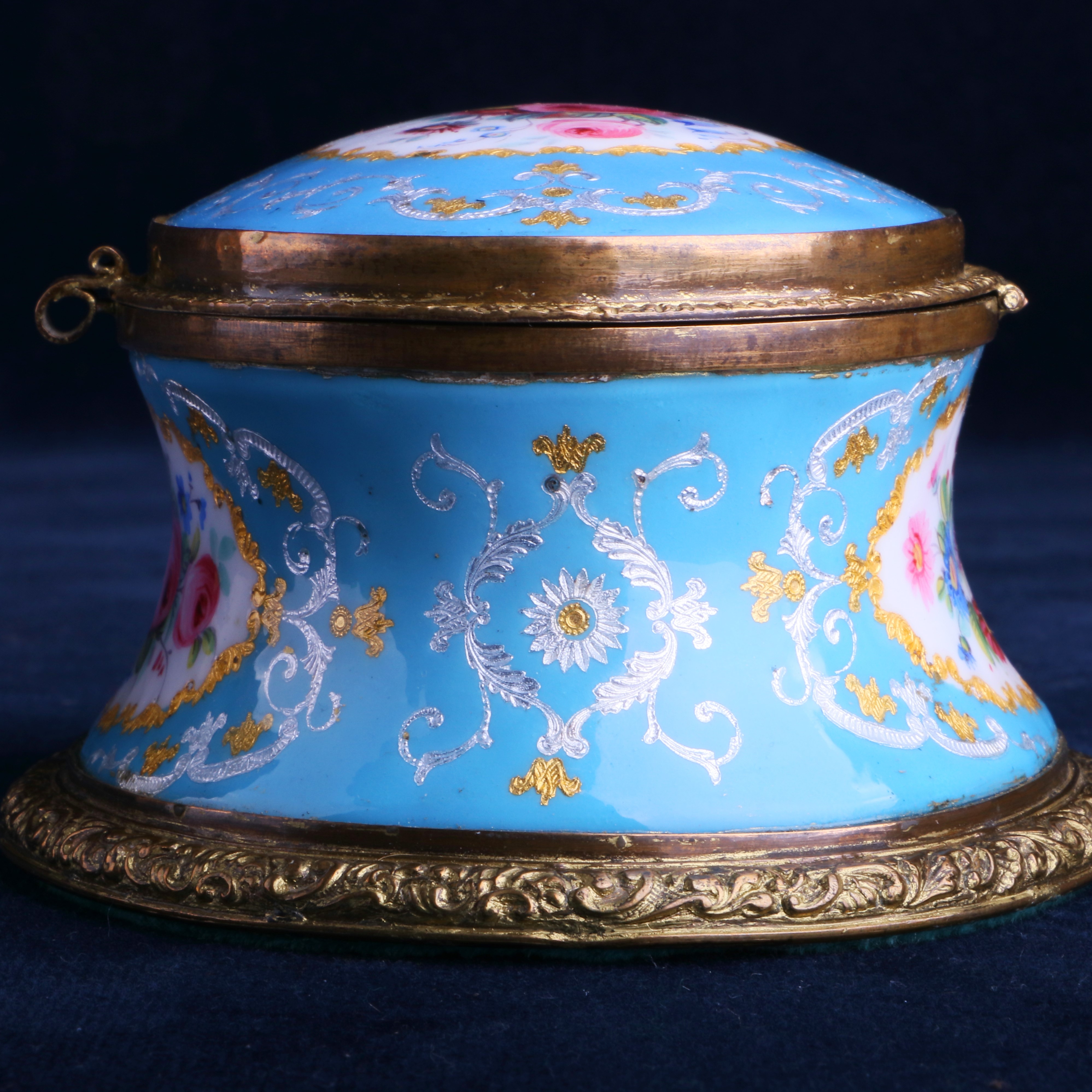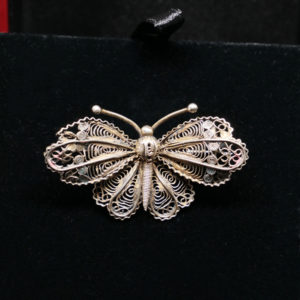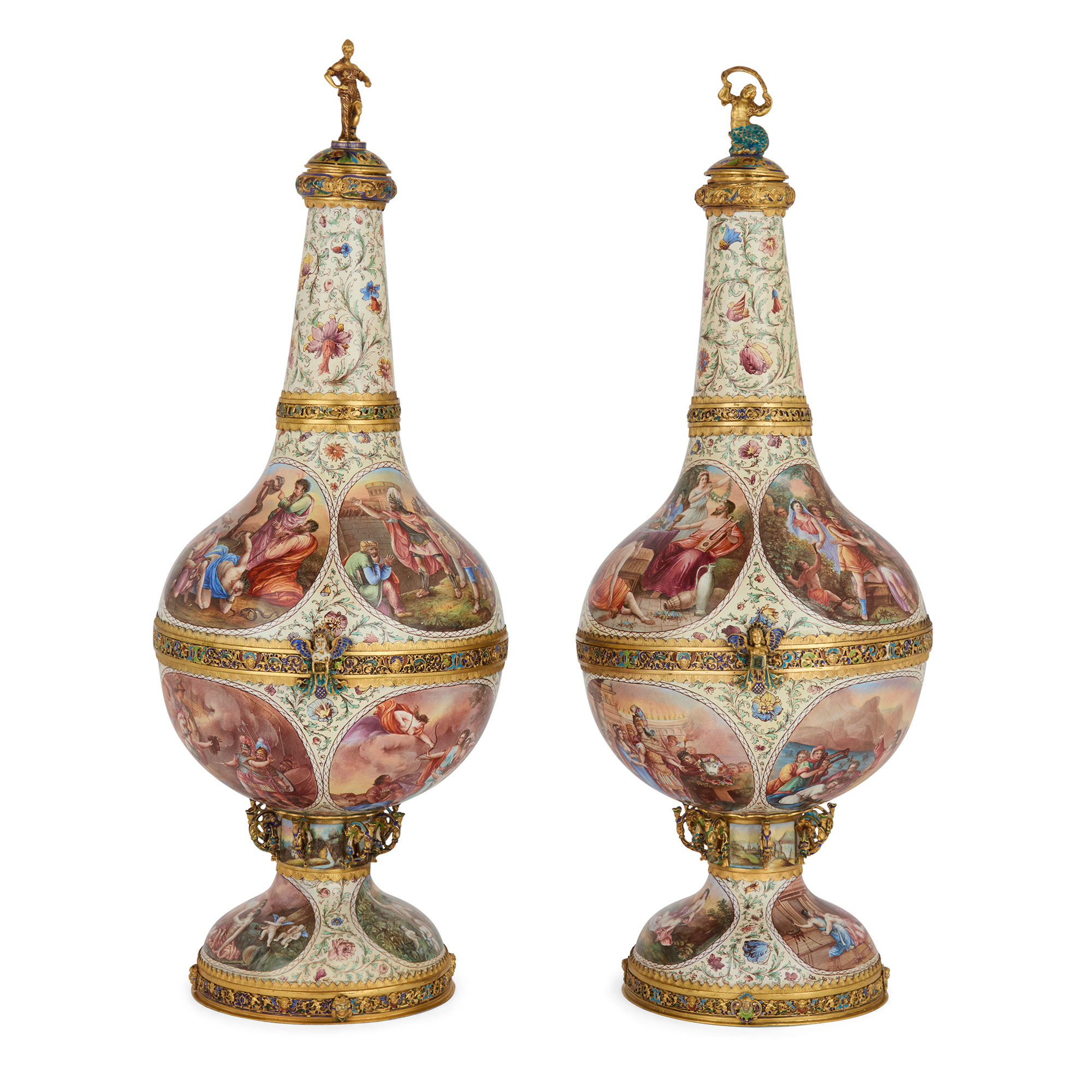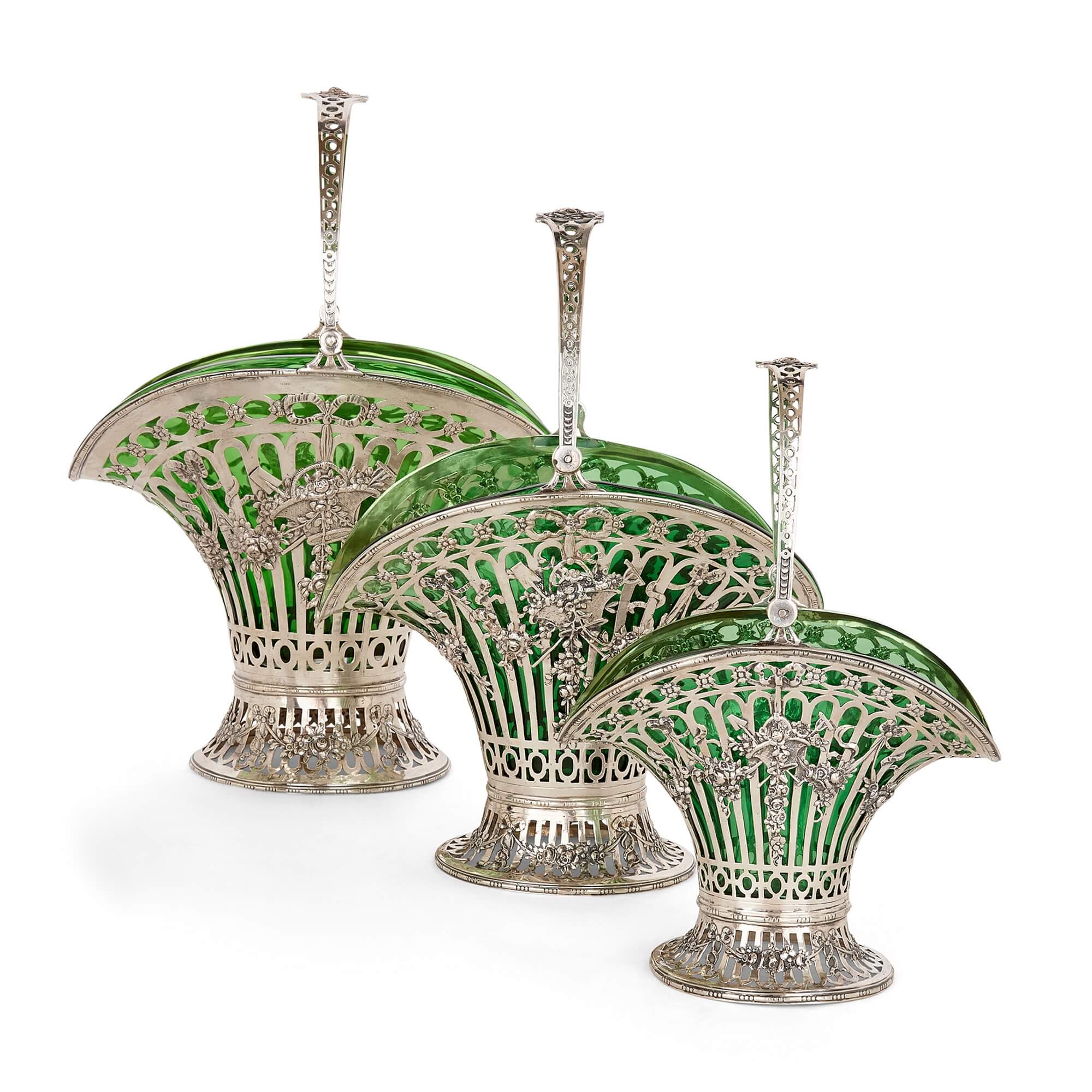描述
Champlevé技法的特色與介紹
Description and Characteristics of Champlevé Enamelwork
Like cloisonné enamelling, champlevé is designed to add colour and glitter to metalwork, by creating small “compartments”, which are then filled with vitreous (glass-like) enamel or inlays of precious stones and heated to fusion-point in a kiln. Once the enamel or stone inlay has cooled, it is smoothed with pumice stone and polished. However, unlike cloisonné – which involves the creation of partitions above the surface of the metal object – the champlevé technique involves the creation of depressions or troughs below the surface – one reason why its name, which means “raised field” in French, is so confusing! The metal lines left untouched between the troughs serve as partitions. Because it is relatively easy to vary the width of the trough, the champlevé method provides for a greater variety of design than that achieved by cloisonné. Although seen in jewellery art made during Classical Antiquity, it was only during the era of Celtic art (from about 400 BCE onwards) that the technique became consistent and widespread. Indeed, Celtic metalwork art exerted a significant influence on Irish Monastic Art (500-1200) as well as early Christian art created in monasteries across England. (For more, please see also: Celtic Jewellery art.) However, the champlevé process is most associated with Romanesque art from the eleventh century onwards, when it was applied to reliquaries, caskets, plaques and vessels, as well as liturgical crosses and a variety of jewellery. It was also used in the making of illuminated manuscripts, to embellish bindings and covers. Later variants include the more translucent basse-taille technique. Famous items created using champlevé enamelling include: the Stavelot Triptych (1158) and the Becket Casket (1180-1190).
Champlevé是一種被用於裝飾金屬器具的技法,與Cloisonné技法類似,兩者都是使用琺瑯顏料上色。該技法也被用於增強金屬表面的光澤,同時也可以用於鑲嵌寶石。在Champlevé的製程裡,工匠先將選用的琺瑯顏料及寶石以手繪的方式塗抹在金屬表面上,並加熱至熔點後,再使其冷卻,最後以浮石將其打磨直到表面光滑平順。與Cloisonné不同的是,Cloisonné技法的成品通常顏色分明,而且在每個顏色間有明顯的金屬分隔線。也就是說,金屬邊線是用於分隔不同顏色的琺瑯顏料,因此Cloisonné在表現上 顏色的對比較為Champlevé強烈。至於Champlevé技法的原理,則是在欲上色金屬表面上預先做出造型並且凹陷的模子,然後直接在其模子上色。所以在Champlevé技法中,琺瑯顏料在繪製途中有可能會產生漸層和混色的效果,因此Champlevé的表現較為多變化且生動自然。其實早在古希臘時期,使用法郎上色的技術就被使用於製作珠寶上,並在塞爾提克時期將其技術發展至成熟,而該技術也間接影響了後來的愛爾蘭馬賽克藝術以及基督藝術。在十一世紀,champlevé技法常常被使用於羅曼式風格的藝術品,常見於 珠寶、收納箱、棺材、裝飾品、各式容器等等,也常見於宗教用品上。另外在部分珍貴手抄本的封面也使用琺瑯畫來作為裝飾。在之後則開始使用質地較為透明的琺瑯顏料來作畫,較有名的champlevé例子包括:The Stavelot Triptych (1158) 和 The Becket Casket (1180-1190) 。
Sèvres porcelain 賽佛爾瓷窯
由專家Matilda Burn講述了在250多年前所建法國窯廠的故事,從美麗的瓷製品到即便皇室委託訂製也須經年等待才能被製造出來的珍品。
在18世紀,瓷器是世界上最珍貴的商品之一。當時只有金字塔頂端的富人才買得起這種易碎材料製成的物品,這些物品都是以高昂花費從遠東地區運送而來的。
瓷器最早於2000多年前由中國工匠研發並生產,但其製成方式一直是被嚴緊管制的秘密。直到18世紀初Johann Friedrich Böttger才發現製作真正的硬質瓷器的神奇配方,並於1710年建立了麥森瓷廠。
儘管歐洲第一個”真正的”瓷器是由德國的Böttger所製,但法國透過Dresden破解其秘方並隨其後生產出屬於自己的瓷器,1738年在Chantilly, St Cloud和Vincennes生產。
Vincennes窯廠在初期就享有瓷器工廠製造的特權地位,擁有國王路易十五和蓬巴杜夫人的皇家贊助及財政支持。到了1756年,Vincennes的窯廠由於受限於空間太過狹窄,進而在Sèvres村莊緣外建造了一座新窯廠,在這無論是技術的開發與藝術上的成就都有了大幅度的成長。
早期的法國瓷器還是無法脫離德國瓷器外觀的既有巢臼。然而Sèvres很快地從單純的模仿走出自己的風格,到了1750年代它們已可以獨立開發出專屬的獨特造型和裝飾。
窯廠剛開始量產的瓷器以小茶杯與咖啡杯為主,有各種底色與描金。早期的底色以“皇家藍“最具代表,帶著一種如水洗後的洗滌感或”斑駁”的色澤。 這些物件,具有優雅的簡潔性並通常在其中心留白處以描金繪出飛行的鳥類。
希勒藏品於2014年在佳士得拍賣上進行出售,為18世紀Sèvres特別精心策畫的瓷器組,該組瓷器後來由John Shearer從1960年末~1990年陸續購入並珍藏,Shearer會收藏這組瓷器是經由當時著名的瓷器經銷商Bob Williams的建議和啟發。
Sèvres瓷器通常標示為藍色左右對稱”交錯”而畫的L印記。在這其中又會畫上另一個字母或雙字母,作為製作該作品的年份代碼。
Sèvres窯廠在窯印方面所下的功夫讓我們今日可以透過分辨窯印理解窯廠曾留下的紀錄,因為畫家和鍍金工人們得到允許能在他們所產的作品上添加他們的”標記”以便識別。許多畫家及其作品都在窯廠記錄中詳載註明(現在在Sèvres的檔案館中存放),因此是具識別性的。
資料來源:
https://www.christies.com/…/Sevres-porcelain-collecting-gui…


